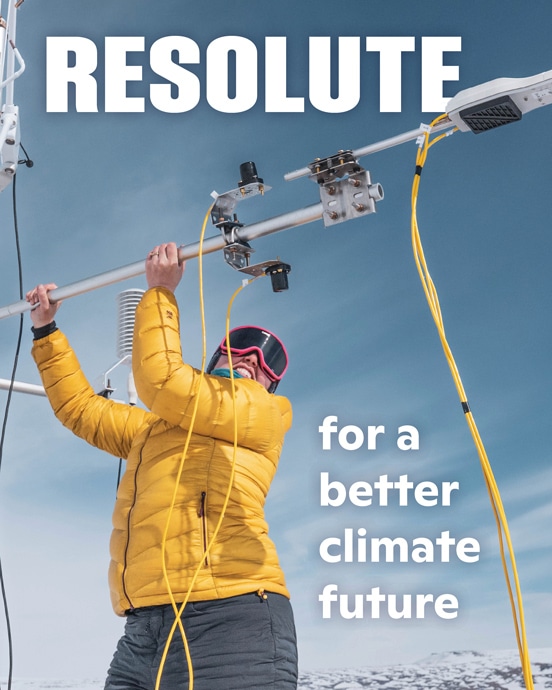Alaska’s snow crabs suddenly vanished. Will history repeat itself as waters warm?
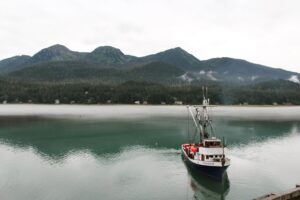
ABOARD THE FISHING VESSEL INSATIABLE – Garrett Kavanaugh grabs a fistful of freshly cooked crab and stuffs it into his mouth, a giant smile on his face, as his feet brace against the rolling sea beneath the deck of his boat.
“Oh yeah,” he says. “That’s what it’s all about.”
As the deck of his 58-foot-long boat rolls on the swells of the Gulf of Alaska, Kavanaugh, 24, cracks another crab leg between his tattooed fingers.
High Lonesome is a working cattle ranch that does things a little differently. The managers of High Lonesome employ regenerative ranching, a technique that works with natural cycles and ecological principles to restore a degraded landscape. The result is a productive ranch with healthy cows, good water retention, a diverse ecology, and—crucially for our work—carbon-rich soils. It’s an ideal location for Woodwell Climate Research Center’s second annual Rangeland Carbon Workshop.
On a beautiful late September day in western Colorado, the Woodwell Climate Rangeland Team (myself, Dr. Jon Sanderman, Dr. Yushu Xia, and Andrew Mullen) gathered at High Lonesome Ranch to lead the workshop in partnership with Colorado State University and Green Groups Graze. We were joined by 45 scientists, ranch managers, members of NGO communities, and representatives from government agencies, all eager to discuss rangeland health, management, and monitoring in the U.S.
Conversations centered on the benefits and challenges of regenerative practices like the ones used at High Lonesome. One core tenet of regenerative ranching is the use of adaptive grazing systems—a concept that promotes the frequent movement of livestock between pastures (whether that’s cattle, bison, goats, or another grazing animal) with short, intense, grazing intervals. Following a grazing event, that land is given a long period of rest and regrowth. These cycles between grazing and rest help promote robust, healthy plant communities with deep root systems. They also keep nutrients cycling through the system, building up a store of water and soil carbon over time.
The growing interest in regenerative ranching across the US (and globally) is being driven by the awareness of increasing impacts from climate change. Severe droughts, flooding, and fire have posed a particular threat to ranching communities. In July 2020 the historic Pine Gulch fire burned through a large portion of High Lonesome Ranch, as well as their grazing leases on adjacent U.S. land. The fire destroyed $1 million in ranching infrastructure and much of the forage needed for grazing that year. It also caused undesirably dense shrubs to replace diverse herbaceous plant species.
On top of climate-driven changes, many ranches in the area are simultaneously dealing with the after-effects of land degradation, lost plant cover, and depletion of soil carbon following decades-to-centuries of misuse. But because ranching communities directly rely on healthy lands for their socioeconomic well-being, many members of these communities are coming forward as good stewards, with the goal of improving private and public lands for the benefit of their families, their country, and future generations.
Throughout the workshop we heard from multiple producers about how they are continuously adapting and evolving their land management practices, building up an arsenal of regenerative strategies by combining their knowledge of ecological principles with what they are observing first hand on the land.
In response to the Pine Gulch Fire, High Lonesome ranch is now adapting by bringing in alternative livestock (goats) to browse down the shrubs, helping to create more structurally and ecologically diverse ecosystems. They are also exploring new methods of sustainable fencing, including a virtual fencing approach where ranchers use GPS-enabled devices that electronically encourage animals to stay within designated grazing areas.
We also discussed how we define the “health” of rangelands in the first place, and how to monitor changes in ecosystem health indicators over time. The importance of monitoring ecosystem health across all U.S. rangelands recently came to the forefront after the bipartisan organization Public Employees for Environmental Responsibility (PEER) released a report in late 2022, based on data from Bureau of Land Management (BLM) monitoring sites on western lands. The report revealed severe declines in the “health, diversity, and productivity” of public grazing lands, primarily driven by overgrazing. The report also emphasized a need to improve data collection and mapping efforts to track range health, while restoring ecosystems through improved management.
But getting to “improved management” and “healthy rangelands”, means filling in information gaps. Our conversations revealed the difference between the kinds of information producers find important in making management decisions, and what information researchers and conservation groups might want to use to understand healthy rangelands.
“Producers need information on the health and vigor of the vegetation in order to make day-to-day management decisions, while conservation groups may be more interested in the broader ecosystem service benefits, such as bird biodiversity and carbon storage, that are emerging from good rangeland stewardship,” says Dr. Sanderman.
Our discussions at High Lonesome indicated a need for a “well-designed, sustainable, wall-to-wall” land health monitoring system for public and private lands alike—something that could integrate producer knowledge with repeated point-based field observations and data provided through remote sensing. A tool like this could help ranchers make decisions that build up carbon storage and provide the ecosystem services that conservation groups are hoping to restore, while also keeping their businesses productive.
As part of her postdoctoral position, Dr. Xia has been constructing a tool to fill this need, aiding ranchers’ decision making around regenerative ranching practices.
“We’ve been working on developing the first version of the Rangeland Carbon Monitoring Tool (RCMT) system, which provides high resolution estimates of rangeland soil carbon and productivity,” says Dr. Xia. “This workshop presented a valuable opportunity for us to gather insights from diverse stakeholders. Their inputs are crucial for us to improve the visualization of our tool.”
Being able to empirically show improvements in carbon storage on rangelands could also help ranchers benefit economically from soil carbon markets—a still-developing strategy for including rangelands in natural climate solutions.
“While there are a lot of debates regarding the practicality of implementing improved rangeland management for economic gains in the carbon market, there is a consensus on the necessity of improved quantification tools like the RCMT,” says Dr. Xia. “These tools are essential to reduce the uncertainty of soil carbon estimates, and thereby facilitate improved rangeland management for multiple ecological benefits.”
Throughout the workshop it also became clear that, in addition to a need for new tools like the RCMT, ranchers need more access to programs that offer community-based networking and knowledge sharing of regenerative practices, as well as support for improving ranch infrastructure to better enact regenerative agriculture. Ultimately, ranchers would also benefit greatly from programs that provide financial payments for ecosystem services provided by healthy open spaces—a model that would allow them to prioritize biodiversity, wildlife habitat, and carbon sequestration in their decision making. Achieving these goals will require changes in programs and policies at all levels, from local to federal, to provide a much-needed investment in the well-being of our rural environments and the health of our planet.
Rangeland soil health conference recap
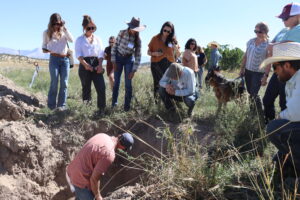
Last month The High Lonesome Ranch hosted the Woodwell Climate Research Center and friends for a small gathering of great minds. The Rangeland Soil Health Conference, sponsored by the Mighty Arrow Foundation, was three days of panels, discussions, and workshops centering the role of western range management in climate mitigation strategies.
The first panel featured practitioners from large ranches in California, Colorado and Nebraska. There was a mix of production oriented producers and science oriented ranches. Each ranch had different goals in order to achieve their desired outcomes, but all recognized the various ecosystem services provided by good management of these landscapes. The speakers dove into some nitty gritty details, from how to account for elk grazing pressure to thoughts around market place offerings such as virtual fencing and carbon credits.
Continue reading on High Lonesome Ranch’s website.
New study shows surprising effects of fire in North America’s boreal forests
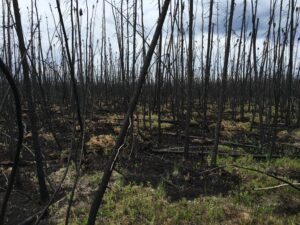
A new study, using a first-of-its-kind approach to analyze satellite imagery from boreal forests over the last three decades, has found that fire may be changing the face of the region in a way researchers did not previously anticipate.
Historically, fires in North American boreal forests have led to coniferous trees being supplanted by deciduous trees, which are faster growing, take up more carbon and reflect more light, leading to cooling of the climate and decreased likelihood of fire.
The study, led by Northern Arizona University and published today in Nature Climate Change, found that surprisingly, while forests do become more deciduous, they don’t stay that way; a few decades later, the same forests gradually start to shift back toward coniferous trees.
Cranberry growers are bringing wetlands back from the dead
In Massachusetts, the onetime cranberry capital of the world, former bogs are transforming into thriving, carbon-storing swamps.
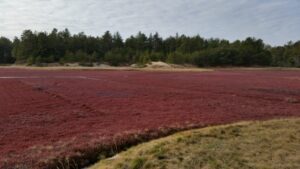
When Glorianna Davenport and her husband, Evan Schulman, decided in the early 2000s to stop growing cranberries after two decades in the business, they were left with a difficult choice. They could sell their land, parts of which had been farmed for well over a century, to a developer and watch it be “chopped up into small lots,” as Davenport puts it. Or they could fight to keep it whole.
Continue reading on Reasons to be Cheerful.
Read the story on Permafrost Pathways.
From the Silo – The Road to COP 28: Episode 2

The first episode in our series leading up to the COP28 summit in November will be distributed in two parts. This episode, called the Road to COP28, features the second half of a roundtable conversation hosted by Rachel Kyte, Dean Emerita of the Fletcher School at Tufts University. Senator Ben Cardin from Maryland also joins the conversation to share his insight on the COP event and efforts to address climate issues in the US Senate. Our panel of experts includes Professor at the University College London Mark Maslin, Interim Chair of the IUCN Climate Crisis Commission Manuel Pulgar-Vidal, Director of the NASA Goddard Institute for Space Studies Gavin Schmidt, Chief of Government Relations at the Woodwell Climate Research Center David McGlinchey, and Co-Founding Dean Emerita of the Columbia Climate School Ruth DeFries. Their conversation sets the stage for what needs to be done at the upcoming COP 28 conference, and foreshadows what real policy changes, if any, may come as a result. Join us for this extremely critical discussion.




